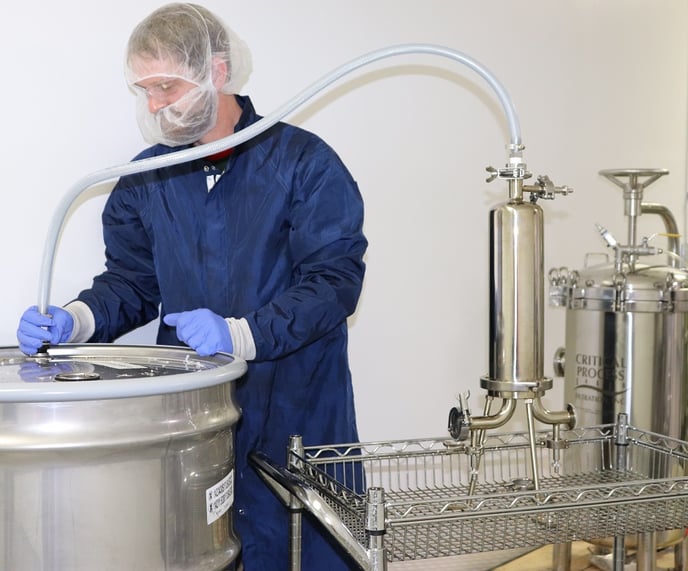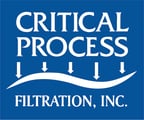Maybe -- under certain strict conditions. We strongly recommend that you ask yourself the questions below and consider alternatives that may save you time and money.
Before embarking on a potentially arduous and costly journey toward reusing your sterilizing filters we strongly recommend that you ask yourself the questions below and consider alternatives that may save you time and money.
In our 22 years of manufacturing filters and helping process teams configure their best systems we know the #1 reason for pursuing the reuse of sterilizing filters is to reduce the cost of filtration. After all, sterilizing final filters are the more expensive filters in a process. So, let’s look at other cost factors associated with filter reuse before you decide if it’s the right strategy for you.

Are you using the properly sized filter for your application?
If your current filter has a lot of filtration capacity left over after processing a batch, perhaps you could reduce filtration cost by using a smaller filter. The potential negatives of this approach are longer processing times and/or higher pressure drops across the filter. In the extreme, a higher-pressure drop may require some level of re-validation to ensure proper retention at the different process condition.
Do you have plans to scale up to larger batch sizes?
A larger batch size using the same filter will spread the filtration cost over more of your product, resulting in lower cost-per-volume filtered. If there are plans to scale up in the near future, your resources might be better spent accelerating those efforts, rather than spending them developing a reuse strategy that might become obsolete.
What is the likelihood of success?
This will depend on what you are filtering, and where in the process the filter is used. In a pharmaceutical process, the further downstream a sterilizing filter is placed, the more critical it is to ensure proper retention. In a typical drug manufacturing operation, sterilizing filters could be used for:
- Water purification
- APIs and inactive ingredient(s) used in a drug component
- The finished drug component
- Other ingredients in drug formulation
- The finished drug
Water purification and ingredient filtration would present the opportunity for filter reuse with minimal validation requirements unless it is critical to maintain batch integrity. For example - if an ingredient is supplied from a bulk container, then it is used over multiple batches of a formulation. However, if the ingredient is used in discrete quantities where it is important to maintain lot traceability, then there would be more stringent validation requirements.
Reusing sterilizing filters for the other components, ingredients and final product will require extensive risk assessment and validation efforts. FDA guidance on sterile filtration strongly suggests sterilizing filters be discarded after each lot, but allows for reuse with proper justification and validation.
How much are you willing to spend on reusing your filters?
Once you establish filter size and batch size, you should calculate the filtration cost (per batch, per volume, etc.) of using your filter(s) once. Then, determine how many times you might reasonably be able to reuse the filters, and estimate the operating cost (labor, materials, etc.) required to process the filters for reuse (cleaning, sterilizing, drying, packaging, storage, etc.). This will allow you to determine the potential cost savings by reusing your filters. Next, calculate how much you can spend on validating filter reuse to get a reasonable return on that investment.
FDA Guidance:
Sterilizing filters should be routinely discarded after processing a single lot. However, in those instances when repeated use can be justified, the sterile filter validation should incorporate the maximum number of lots to be processed.
Guidance for Industry - Sterile Drug Products Produced by Aseptic Processing — Current Good Manufacturing Practice, Section IX - B. Filtration Efficacy, page 28
How much will it actually cost to determine if sterilizing filter reuse is the right option?
There will be many steps required to justify and validate the reuse of your sterilizing filters, some of which may be difficult to accurately predict the actual cost. They are:
- The cost of an extensive risk assessment
- The cost of validating the process
- The cost of implementing the validated process
All will involve input from Operations, Engineering, Quality, Regulatory Affairs, etc. How many hours of meetings this may consume is open-ended, depending on the risks and mitigation actions identified.
Risk Analysis Recommendations
At a minimum, the risk assessment needs to consider:
Maintaining batch integrity and traceability
- Filters dedicated to specific products to prevent cross-contamination
- Filter flushing and cleaning to prevent batch-to-batch mixing
- Effect of batch-to-batch mixing and remediation as required
- Each step of the reuse process must be evaluated as to what could go wrong, the impact it would have and how to prevent it
Determining the maximum number of uses for the filter
- Does risk increase with additional filter reuse
Assessing Endotoxin potential
- Depending on the species of bacteria, endotoxin can be released as they die
- Potential endotoxin level
- Impact and mitigation
Identifying overall risk and impact on a specific batch
- Batch rework (if allowable)
- Batch scrapped
- Accidental release of improperly processed batch
Understanding if filter reuse will require additional batch testing
- During validation (almost certainly)
- Post validation
 Costs of validating the reuse of sterilizing filters
Costs of validating the reuse of sterilizing filters
Each step of the reuse procedure will require Process Development and SOP generation. Here again, this will require resources from multiple groups (Operations, Engineering and Quality at a minimum) and it may be difficult to accurately predict the level of effort required.
- Flushing after use to remove all traces of the processed batch
- Sterilization method
- Drying
- Segregation
- Storage
- Integrity testing
- Startup procedure for the next batch
- Batch testing to verify filter performance
After reuse procedures and SOPs have been established, each step will require some level of validation. With proper justification, it may be possible to combine some of the steps above.
- Protocol development, review and approval
- Establish acceptance criteria
- Execution
- Report
The cost of product consumed during protocol execution must also be considered.
Cost of implementing the reuse of sterilizing filters
In addition to the cost of Process Development and SOPs, there may be new equipment required to implement filter reuse. These would need to be installed prior to Validation execution.
- Sanitization equipment: Autoclave, Clean-in-place system, etc.
- Drying oven
- Additional integrity testing equipment
- Storage equipment
Is it worth it?
Now that you have a cost estimate to compare against the potential savings of reusing sterilizing filters, you can consider the following:
- How many reuses are required to generate an adequate return on investment?
- Is this number of reuses achievable?
- What is the cost of a batch failure that might result from filter reuse? (Depending on the value of the product being filtered, a single batch failure may outweigh a lot of savings).
In performing the above analysis, it is important to consider both the base estimated cost, and establish a range (in case of unforeseen overruns) to ensure it makes sense to proceed.
Each step of the reuse procedure will require Process Development and SOP generation. Here again, this will require resources from multiple groups (Operations, Engineering, and Quality at a minimum), and it may be difficult to accurately predict the level of effort required.
Alternatives to reusing sterilizing filters
- Make sure you are using a filter properly sized to your batch. As discussed above, changing to a smaller filter would have an immediate impact on cost with minimal validation effort.
- Increase your batch size. As mentioned above, if this is in your plans you would probably be better off focusing on this instead of how to reuse your filters.
- Identify and validate an alternate, lower-cost filter. This may turn out to be much simpler than validating the multiple steps required for reusing a filter and may provide a better return on investment.
Summary and conclusion
We have discussed that while it may be possible to reuse your sterilizing filters, it will most likely be an expensive and resource-consuming process to arrive at a fully validated and documented process that will satisfy the appropriate regulatory bodies. Alternatives are available that may not save quite as much money as filter reuse, but would be far easier and less costly to implement with a better return on investment.
Need to optimize your sterilizing filtration costs?
Whichever way you choose to go, Critical Process Filtration can help. We offer over twenty years of experience as a mid-size manufacturer of process filters. We have an experienced Applications and Process Support staff that will perform any testing required to identify the right sterilizing filters for your process and can assist in risk assessment, process development, and validation as required.
Contact Us Today
We'll make sure you get a robust, one-of-a-kind solution for your process with the best ROI.
